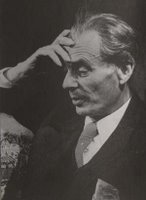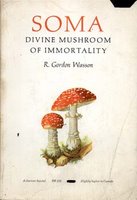 * Soma (Sanskrit), or Haoma (Avestan), from Proto-Indo-Iranian sauma-, was a ritual drink of importance among the early Indo-Iranians, and the later Vedic and greater Persian cultures. It is frequently mentioned in the Rigveda, which contains many hymns praising its energizing or intoxicating qualities. In the Avesta, Haoma has an entire Yasht dedicated to it.
* Soma (Sanskrit), or Haoma (Avestan), from Proto-Indo-Iranian sauma-, was a ritual drink of importance among the early Indo-Iranians, and the later Vedic and greater Persian cultures. It is frequently mentioned in the Rigveda, which contains many hymns praising its energizing or intoxicating qualities. In the Avesta, Haoma has an entire Yasht dedicated to it. It is described as prepared by pressing juice from the stalks of a certain mountain plant, which has been variously hypothesized to be a psychedelic mushroom, cannabis, peganum harmala, or ephedra. In both Vedic and Zoroastrian tradition, the drink is identified with the plant, and also personified as a divinity, the three forming a religious or mythological unity.
It is described as prepared by pressing juice from the stalks of a certain mountain plant, which has been variously hypothesized to be a psychedelic mushroom, cannabis, peganum harmala, or ephedra. In both Vedic and Zoroastrian tradition, the drink is identified with the plant, and also personified as a divinity, the three forming a religious or mythological unity.
The Rigveda (8.48.3, tr. Griffith) states,
- "We have drunk Soma and become immortal; we have attained the light, the Gods discovered.
- Now what may foeman's malice do to harm us? What, O Immortal, mortal man's deception?"

In Hindu art, the god Soma was depicted as a bull or bird, and sometimes as an embryo, but rarely as an adult human. In Hinduism, the god Soma evolved into a lunar deity, and became associated with the underworld. The moon is the cup from which the gods drink Soma, and so Soma became identified with the moon god Chandra. A waxing moon meant Soma was recreating himself, ready to be drunk again. Alternatively, Soma's twenty-seven wives were daughters of Daksha, who felt he paid too much attention to just one of his wives, Rohini. He cursed him to wither and die, but the wives intervened and the death became periodic and temporary, and is symbolized by the waxing and waning of the moon.
- There has been much speculation as to the original Proto-Indo-Iranian Sauma plant. It was generally assumed to be hallucinogenic, based on RV 8.48 cited above.
(for more go to http://en.wikipedia.org/wiki/Soma)
* Botanic identity of Soma-Haoma
(for more go to http://en.wikipedia.org/wiki/Botanic_identity_of_Soma-Haoma)
* Somatherapy (or Soma) was created by the writer Roberto Freire in the 1970s as a group therapy, based on the research of the psychoanalyst Wilhelm Reich. With the objective of freeing the individual to be more creative, the exercises in Soma work with the relationship between the body and emotions are evident in the work of Reich. They work with concepts based on the vital organisation of the self stemming from Gestalt therapy. Other essential ingredients in Soma are the studies of Antipsychiatry related to human communication and the Brazilian martial art / dance Capoeira Angola. Soma groups last a year and a half, with frequent sessions, including usually one full weekend per month for the entire group, as well as frequent capoeira classes, study sessions, social activities, and two self-organized group trips. These times together allow the participants to build and develop the group dynamic, in line with the principles of Anarchism. The originality of Soma stems from the fusion of pedagogy and politics within the therapeutic process, in which pleasure and freedom construct the notion of health which combats the neurosis of capitalism in our globalised society.
(for more go to http://en.wikipedia.org/wiki/Somatherapy)




No comments:
Post a Comment